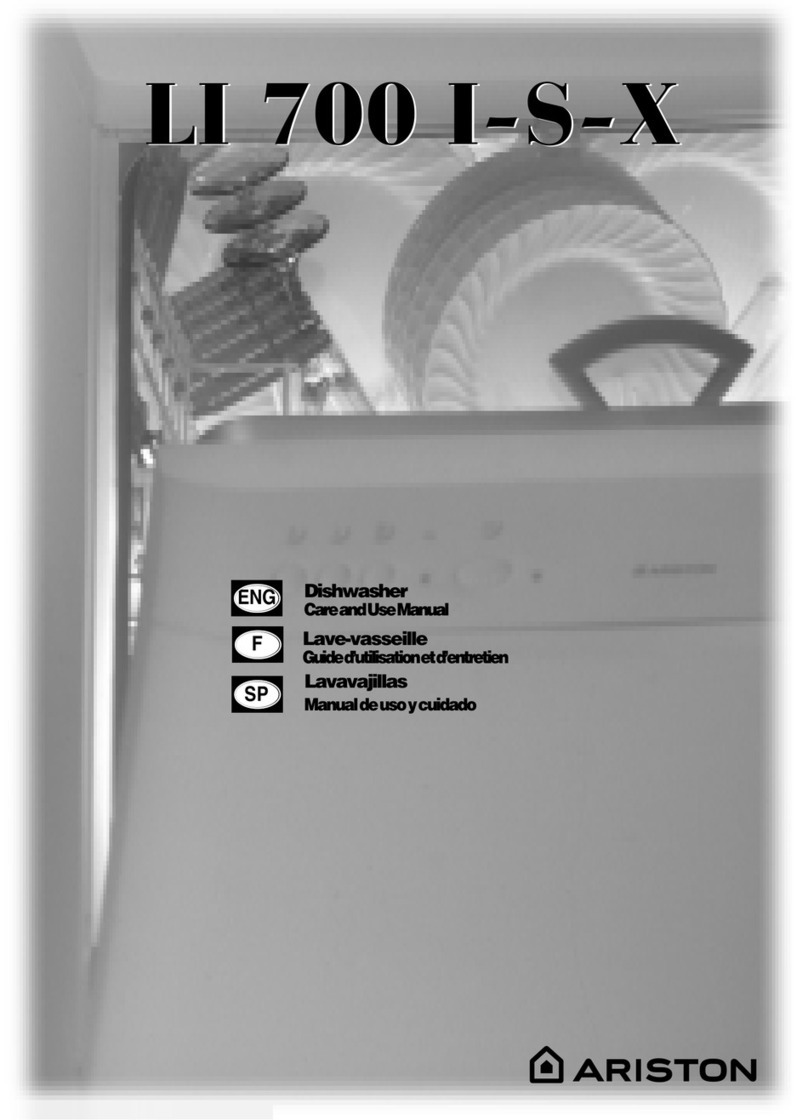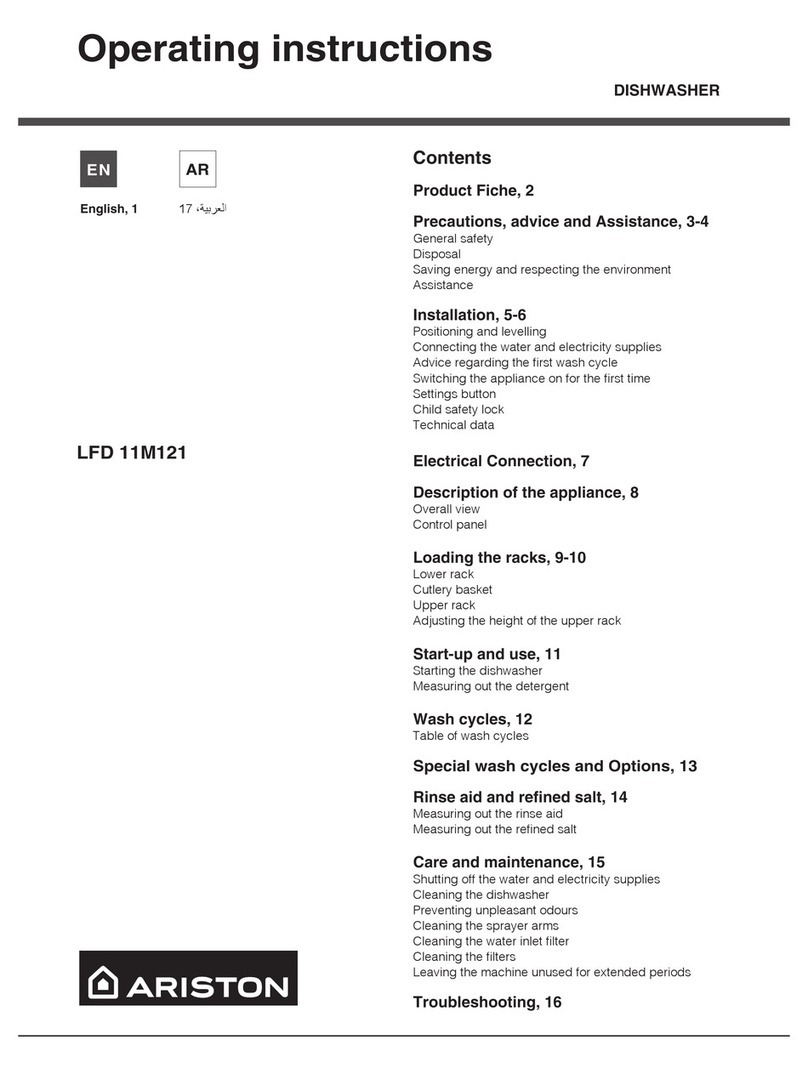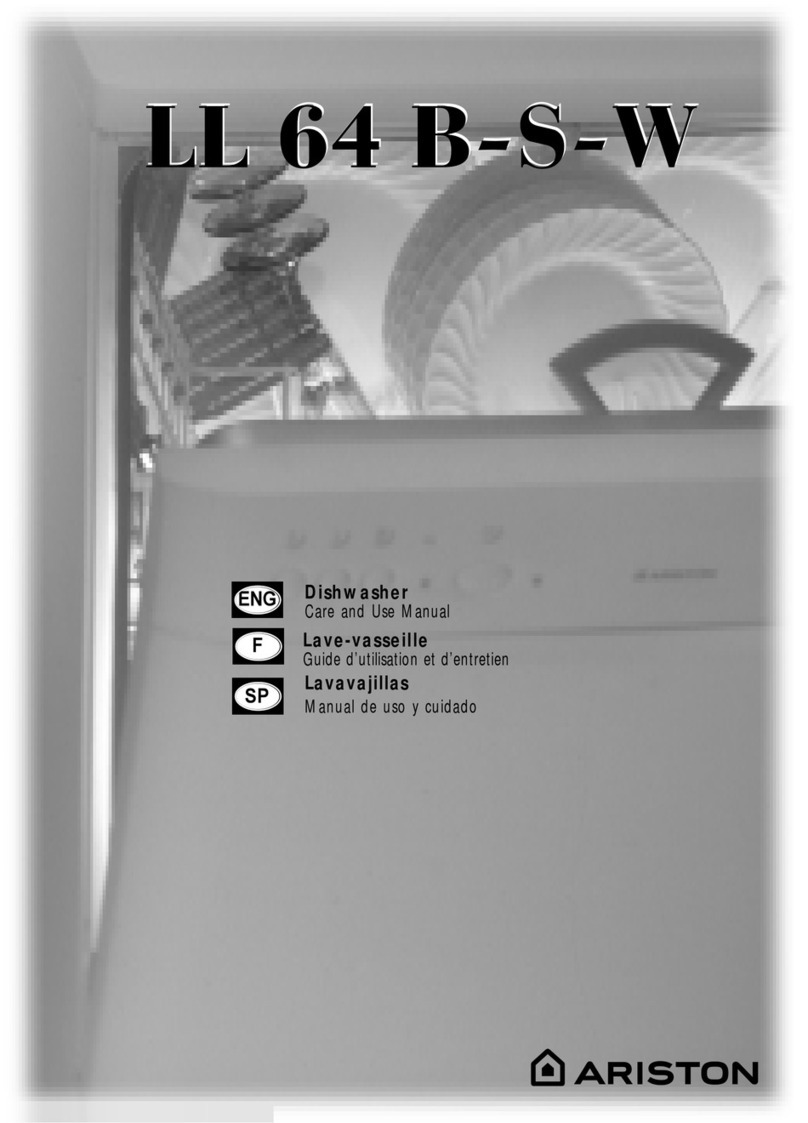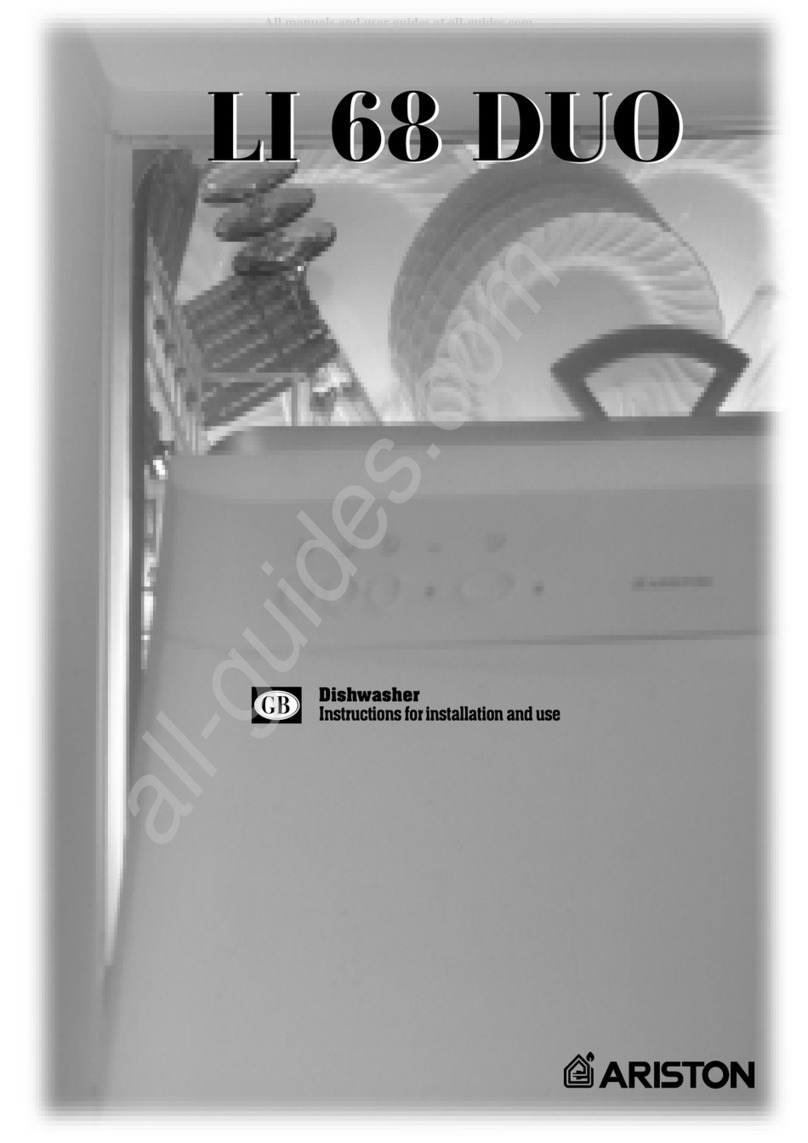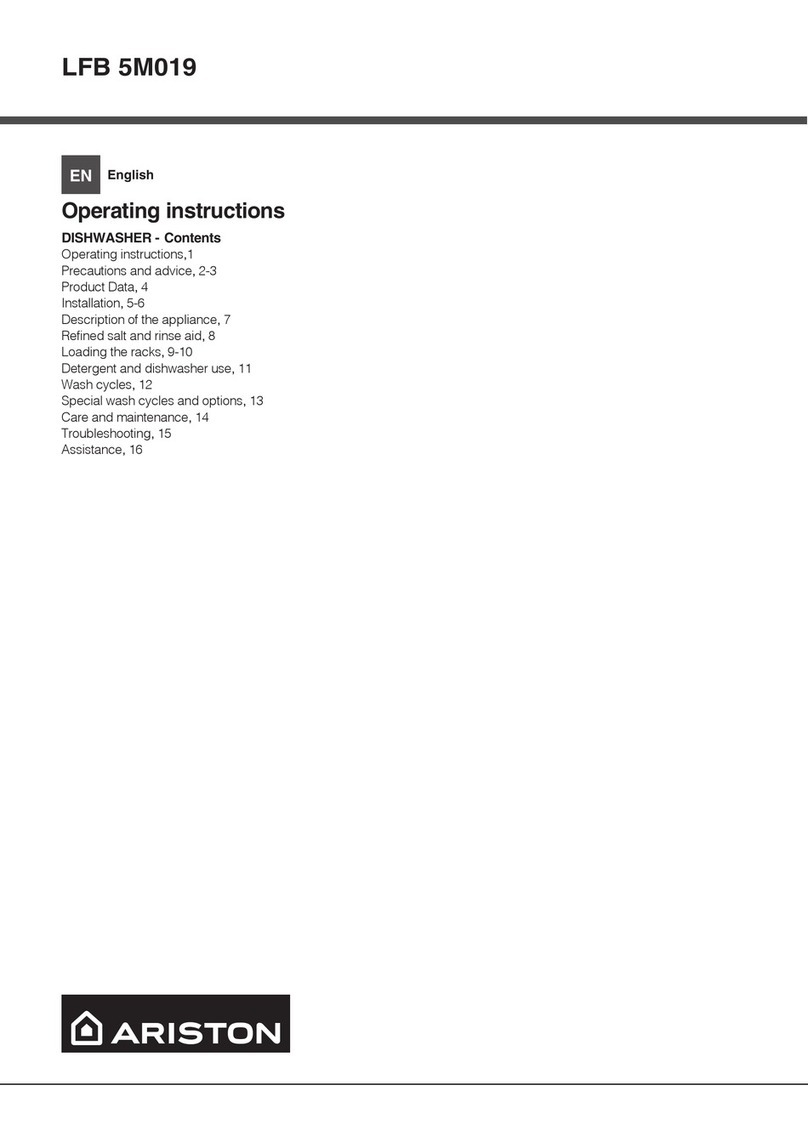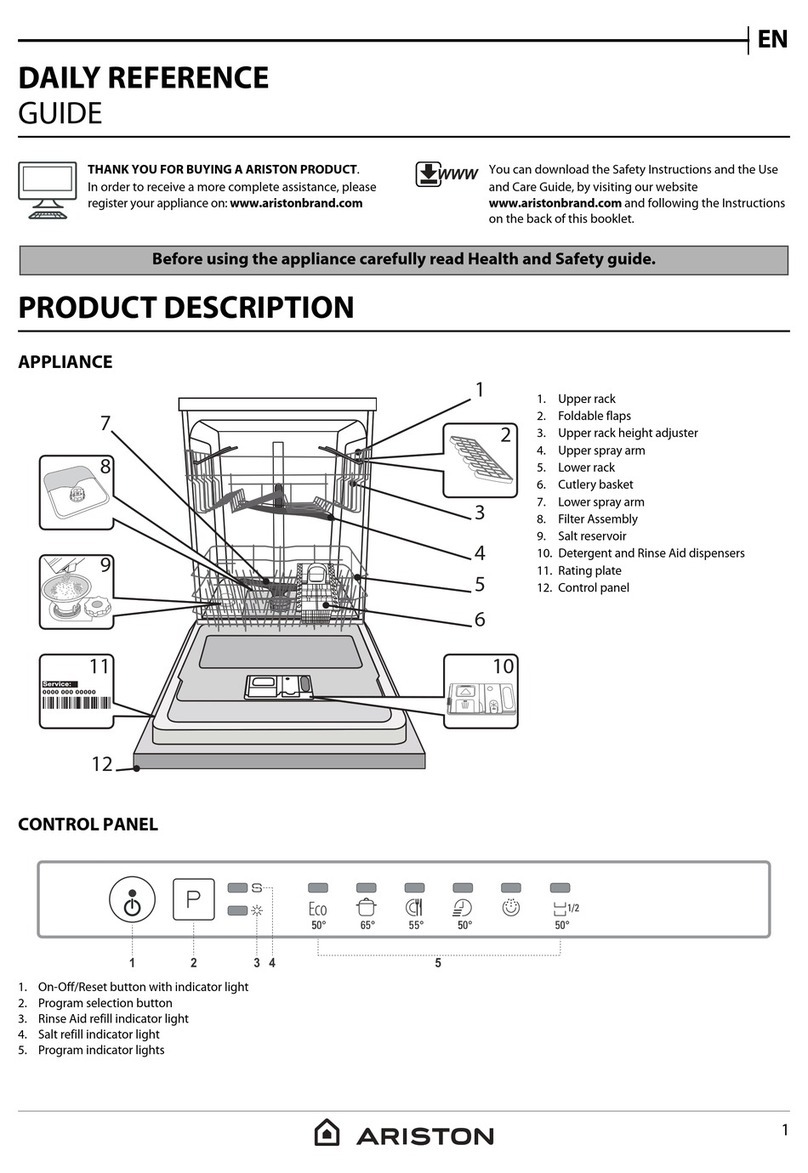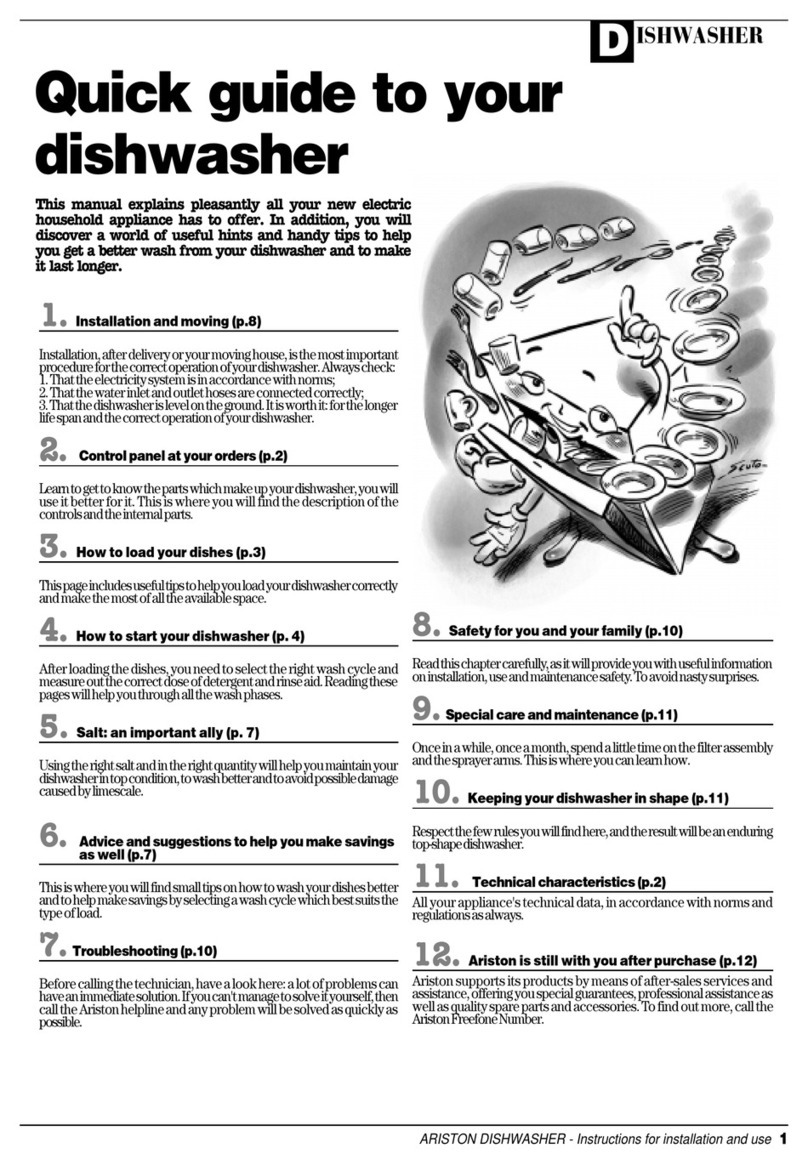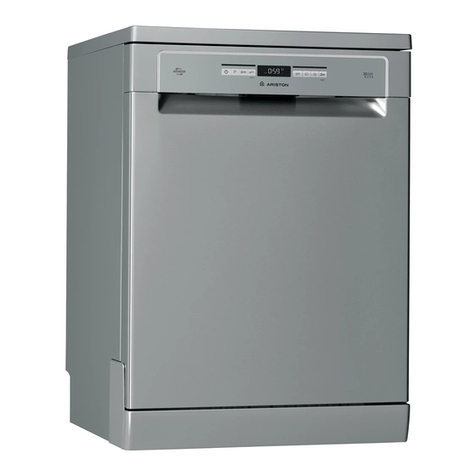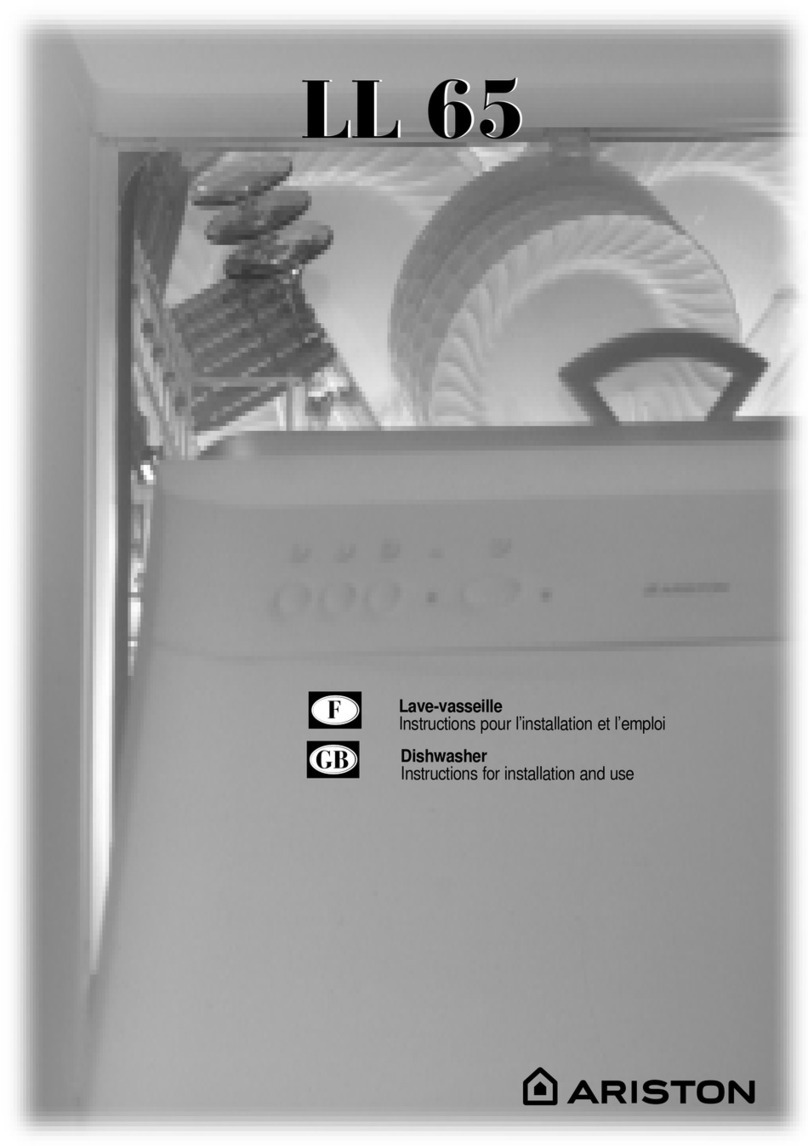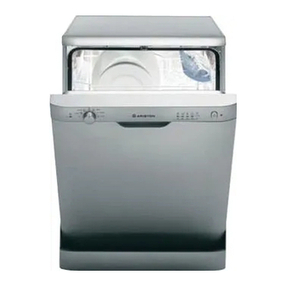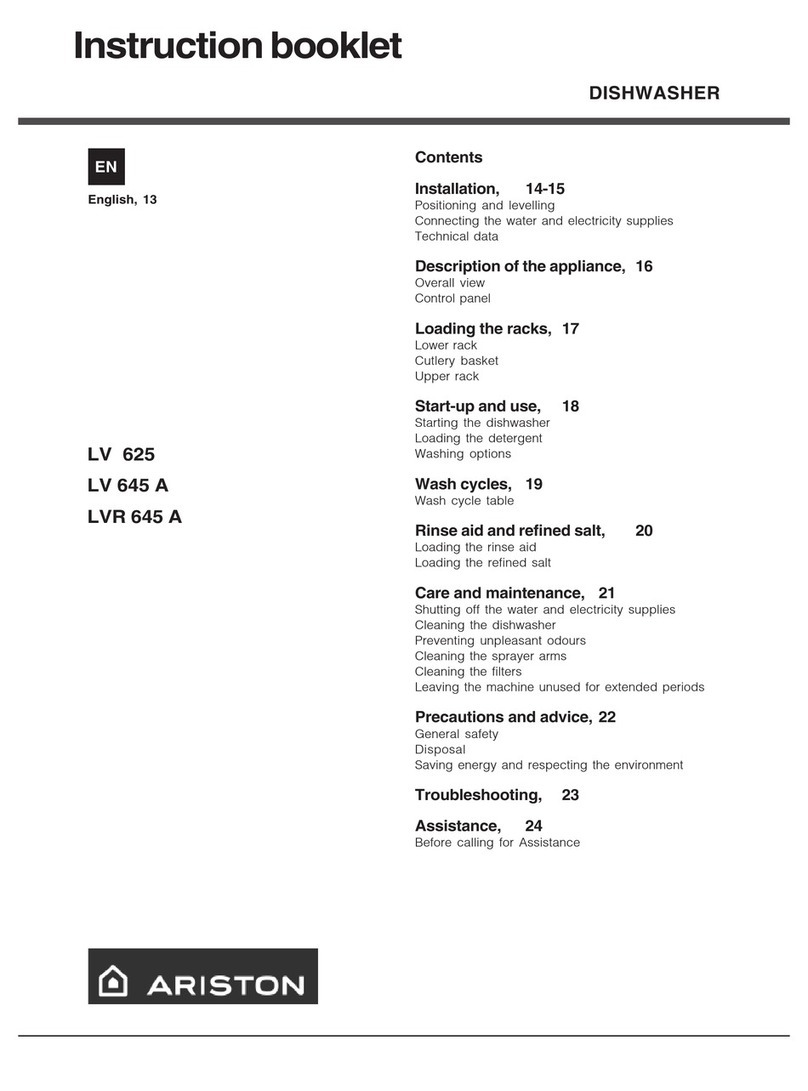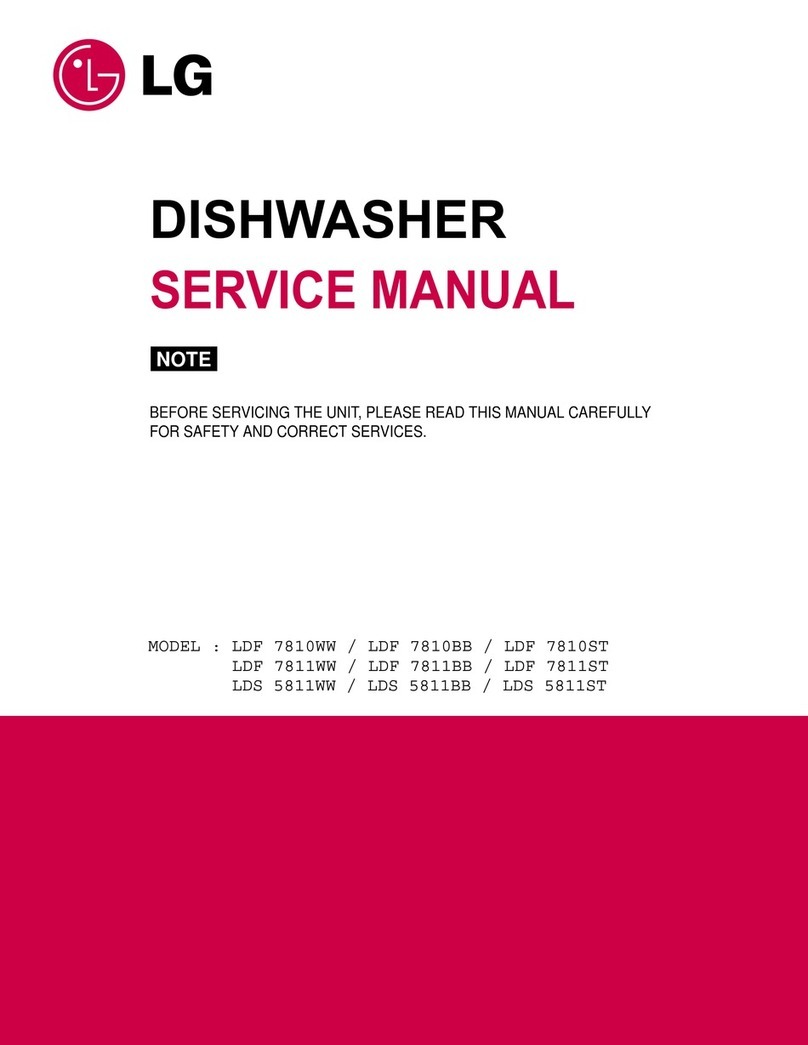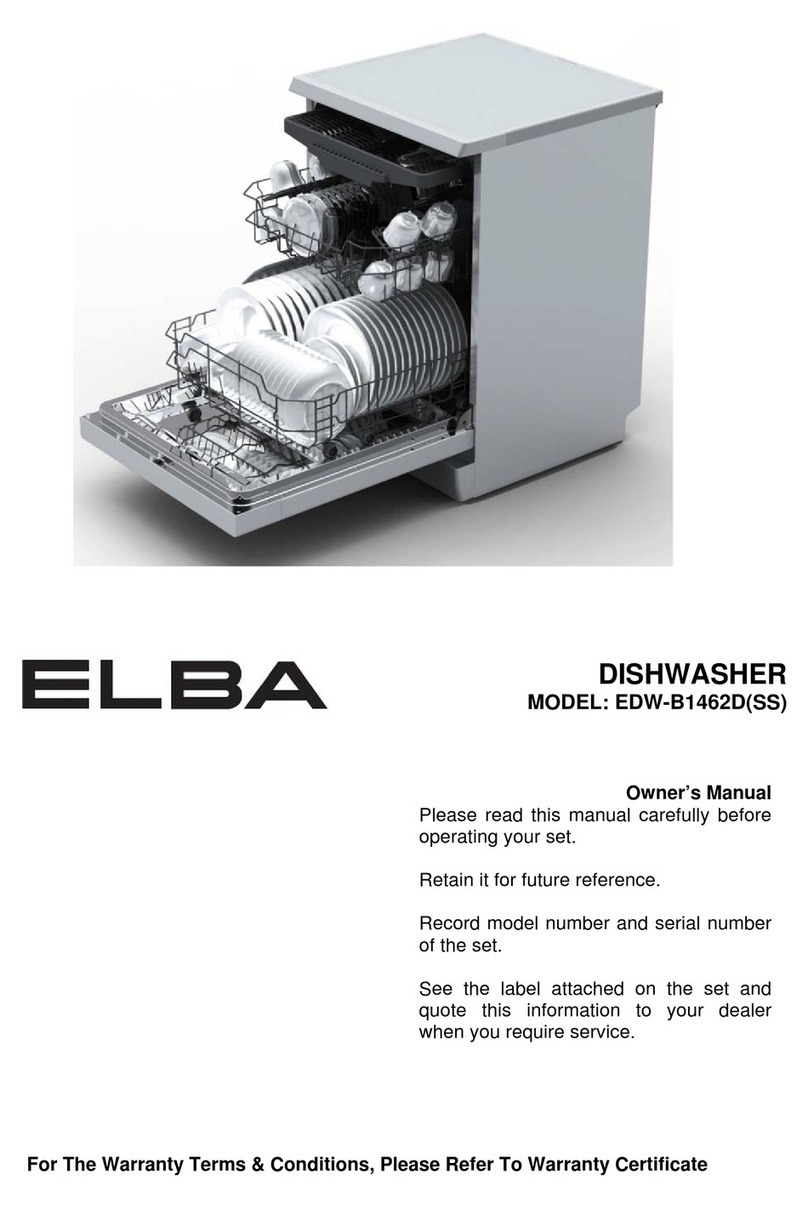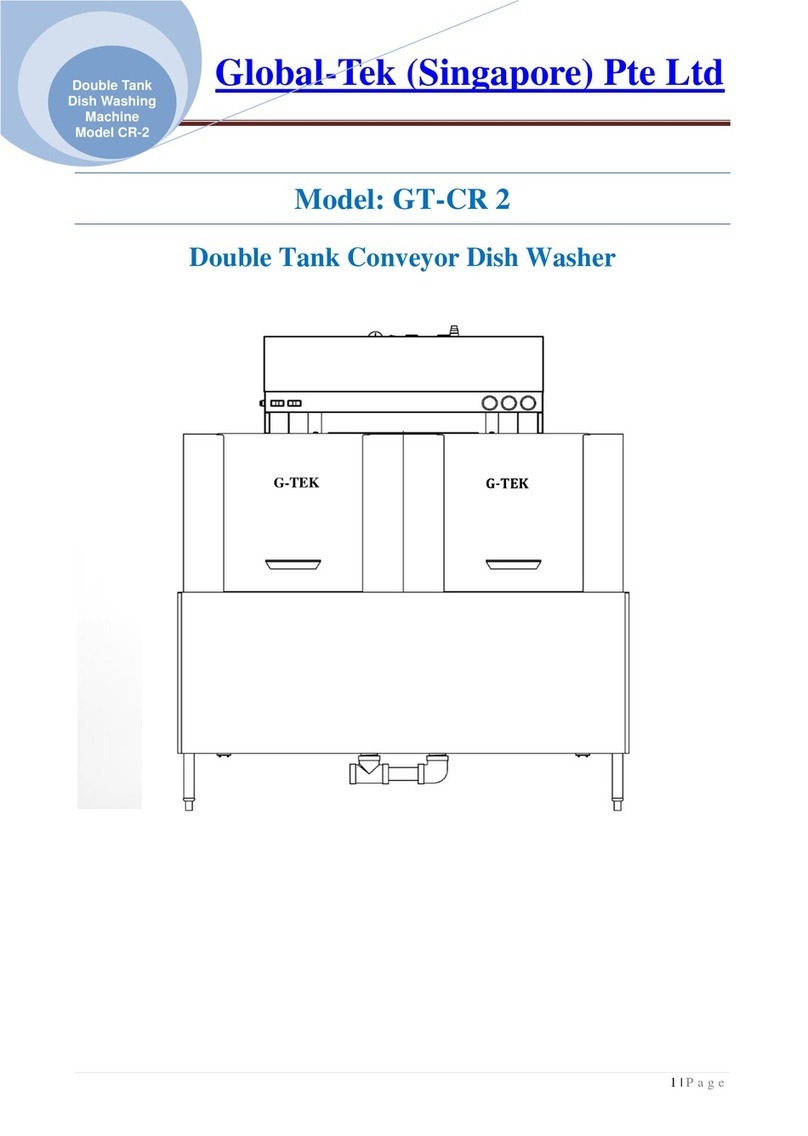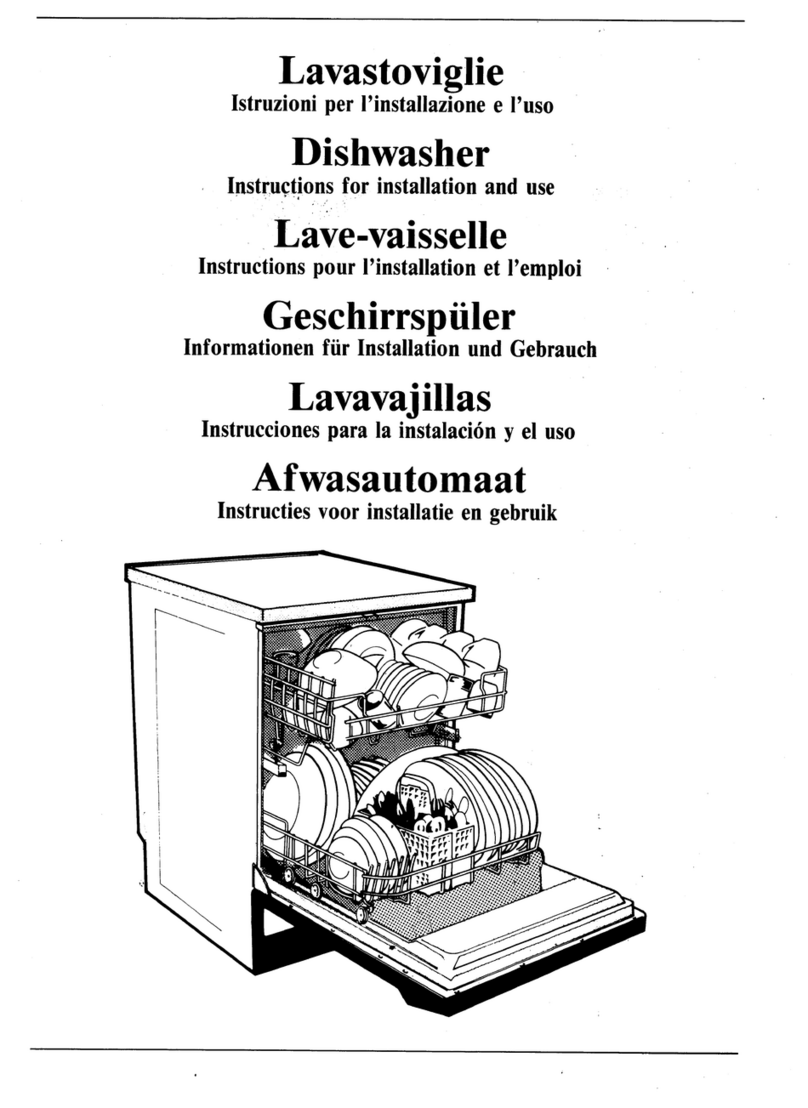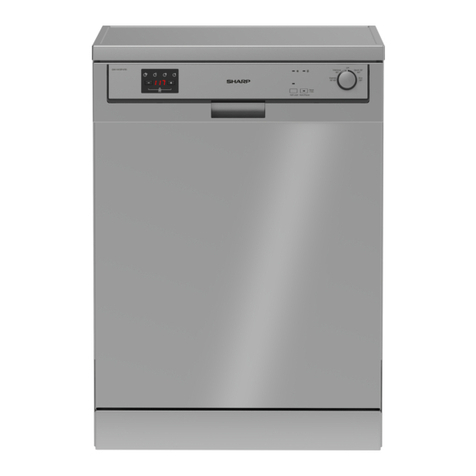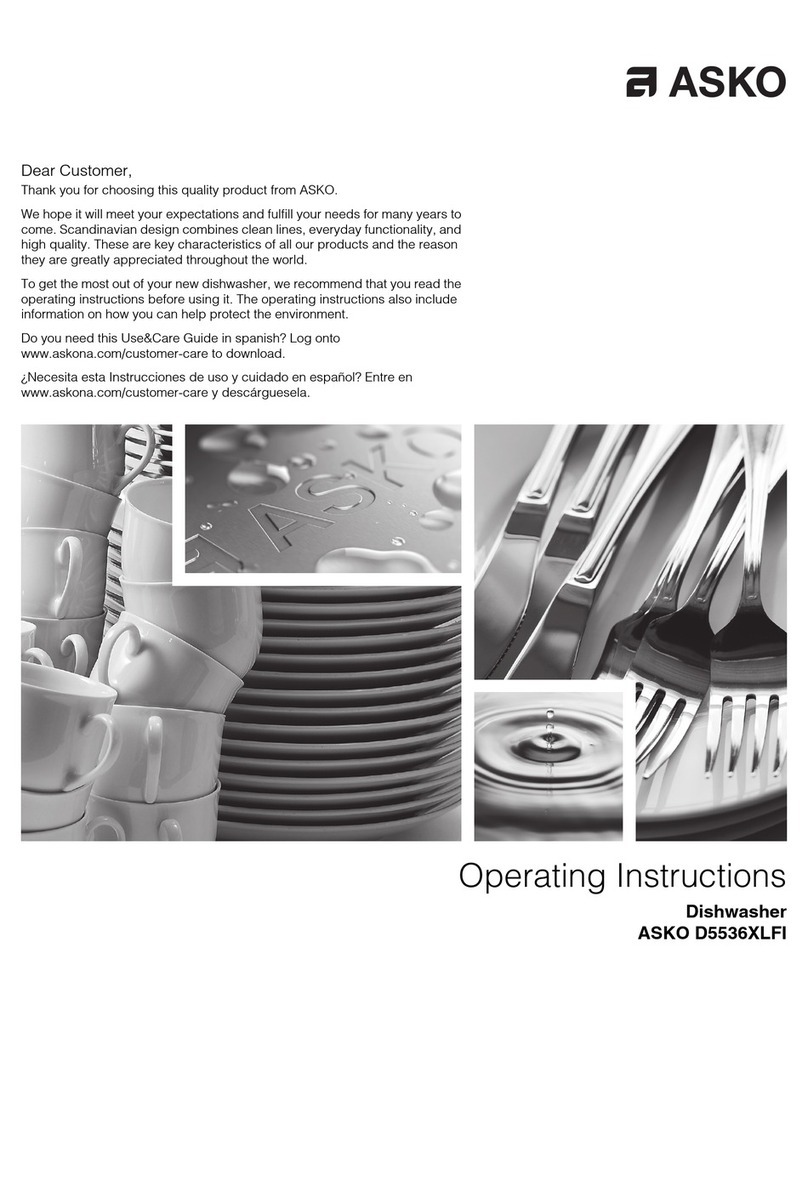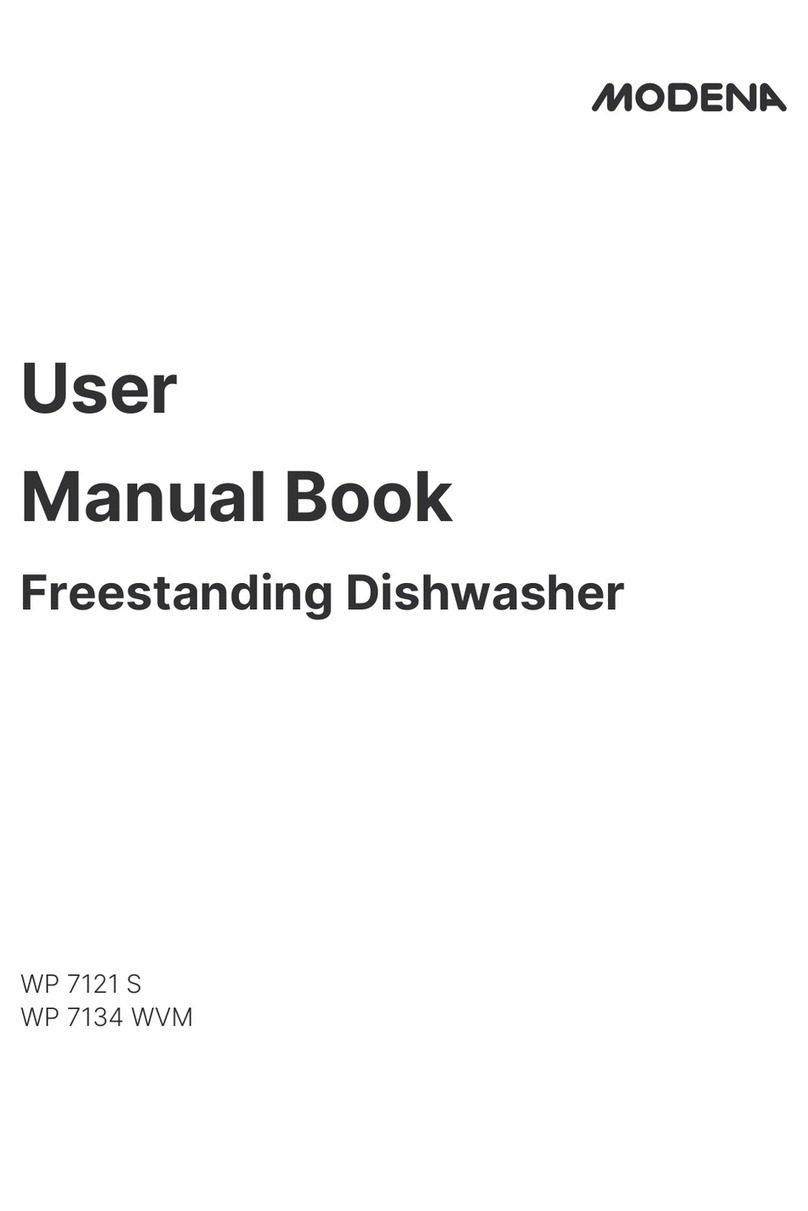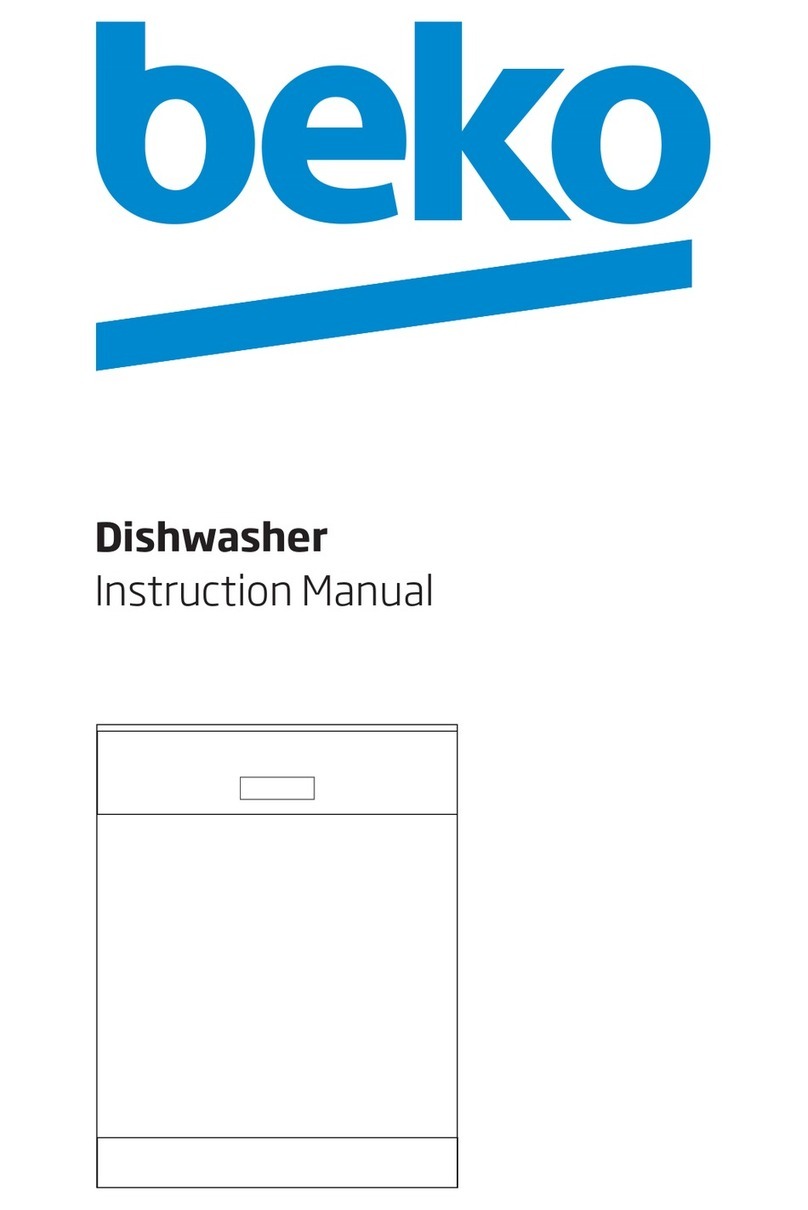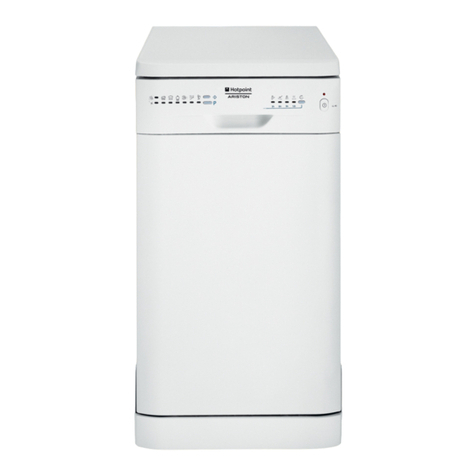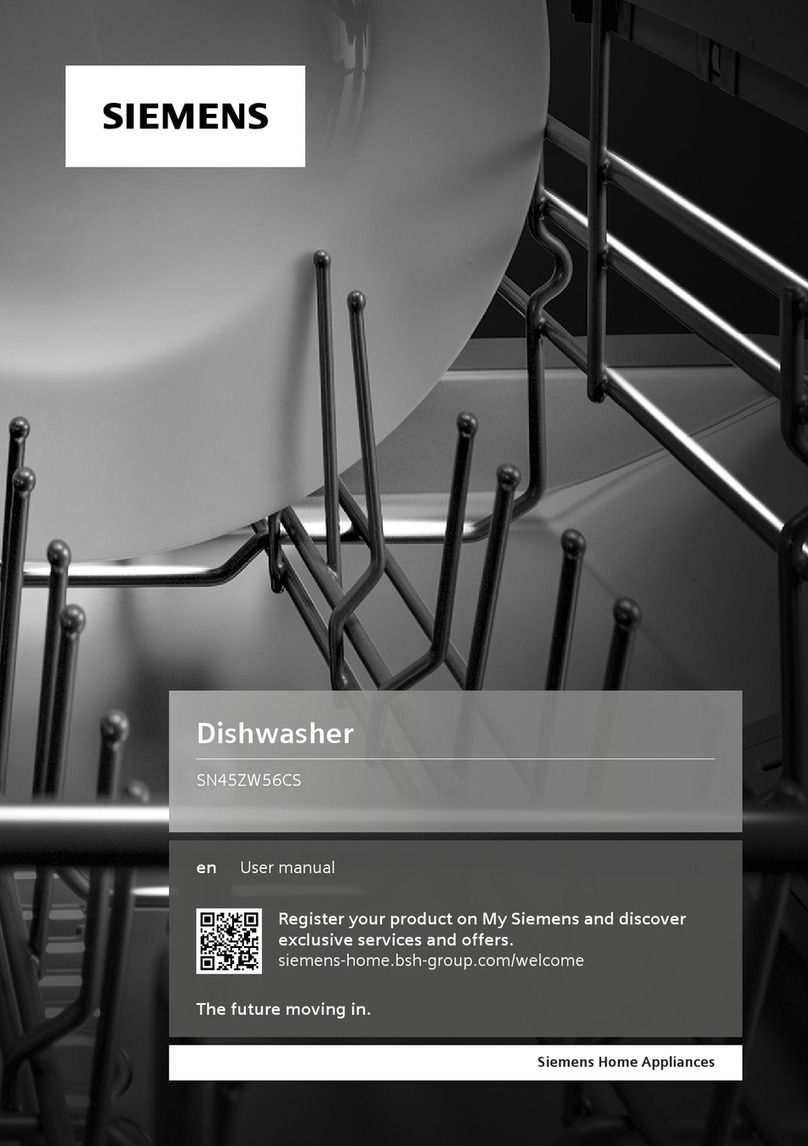ARISTON DISHWASHER - Instructions for installation and use
15
DISHWASHER
You have loaded your dishes and you now have
to set the wash cycle. It takes just one minute
to learn how
Starting the dishwasher
Ready, steady, go!
First of all.
Turn on the water tap completely
and press ON-OFF button "A". you
willhearashortbeepandindicator
light "B" lights up. Now the
appliance is on and awaiting in-
structions.
Selecting the wash
cycle.
Select the wash cycle by pressing
button "P". Each time you press
the button, a beep will sound and
indicator lights "E" will light up in
sequence: choose the cycle you
deem most suited to the type of
dishes to be washed (take a look at
page 17, where you will find the
wash cycle table). If the appliance
door is shut, press the Start button
"R" and you will hear a beep; the
cycle will start up within a few
seconds.
The dishwasher informs
you.
Your dishwasher is fitted with
indicator lights (G) which light up
to indicate the cycle phase under
way.
Here are the symbols correspond-
ing to each cycle phase:
pre-wash, wash, rinses, drying.
At all times, your dishwasher tells
you which cycle phase is under
way.
Modifying a wash cycle
in progress.
But if you have chosen the wrong
cycle,nottoworry!Youcanmodify
the wash cycle in progress, if it has
only just started. Keep the RESET
button "R" pressed for about 5
seconds: a prolonged beep will
sound, followed by three short
beeps. Indicator light "G" will turn
off and at this stage, all the settings
will have been cancelled. You are
now free to re-set the correct wash
cycle.
You've left out a dish?
Well, it happens to everyone. Inter-
ruptthewashcyclebypressingthe
ON-OFFbutton,insertthedishyou
had forgotten and press the ON-
OFF button again. The cycle will
startupfrom whereyouinterrupted
it.
Finished?
The end of the wash cycle is indi-
cated by two short beeps and the
flashing of the drying phase indica-
tor light.
Turn the appliance off by press-
ing button "A", thus cutting off
the electricity supply.
Turn off the water tap.
Waita few minutes before unload-
ing the dishes: they are very
hot! If you wait a little while, they
dry better thanks to the steam.
Empty the lower rack first.
There's been a power
failure? Have you opened
the dishwasher door?
The wash cycle stops and then
restartswhentheelectricitycomes
backonorwhenyoushutthe door.
Everything is under control!
You decide when it
starts.
When you have loaded the dishes,
you can choose when to start your
dishwasherbeforesettingthewash
cycle desired. Press button "D" to
delay the start of the wash cycle
by 12, 9, 6 or 3 hours. Each time
you press it, you will hear a short
beep and the indicator light "G"
corresponding to the selected
delay will light up.
Now you can select the desired
wash cycle. Press the start button
"R" and after you hear the beep,
the countdown to the delayed start
will begin.
Once this time is up, the indicator
lightwillstopflashingandthewash
cycle will begin.
If you have set a 12 hour delay, for
example, once you have selected
the wash cycle, the 12 hour
indicator light will flash followed
by the others in sequence until the
set time delay is up. A quick look
at the indicator lights will keep you
informed of the countdown
progress at all times.
Have you changed your
mind?
If you change your mind, you can
set a shorter time delay: press but-
ton "D" to select it. You need not
reset the wash cycle.
If on the other hand you want to
cancel the delay set and you want
the cycle to start immediately,
press button "D" repeatedly until
the cycle starts and indicator light
"G" corresponding to the cycle
start phase comes on.
Dual function of indicator
lights "G"
1) flashing to indicate a
delayed start: to remind you
that you have set a delayed start;
2) on and not flashing
beneath the cycle phase
symbol:
meaning the cycle has started and
is in the phase indicated by the
symbol.
Would you like to see
which settings you have
made?
Atanytime,when the cycleisunder
way, if you press button "P", the
cycleinprogressindicatorlightwill
light up for a few seconds.
If opening the
door soon after
the end of the
programme,or
during it, stand
away from the
Dishwasher, to
avoid possible
injury from hot
steam.
Make sure the
wash cycle has
ended before
removing the
dishes!

